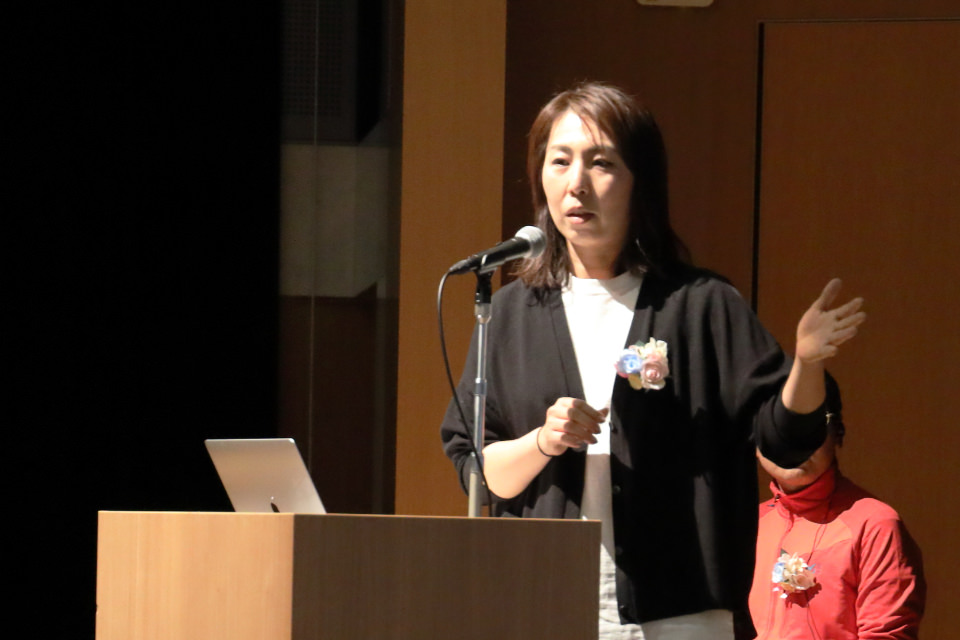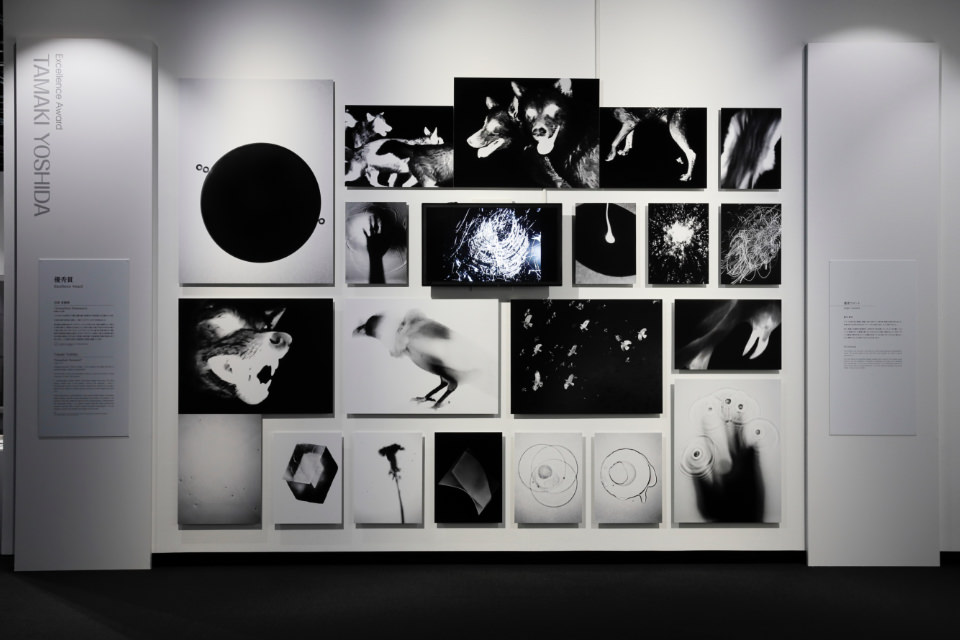PRESENTATION
This work's theme is the world and energy. By the world, I mean the earth we live on. The dictionary definition of energy is “Power or vigor; the capacity of light, heat, or other quantity to do work on another body or system”. But the energy I want to convey in this work is something more sensory — a force, a power, an existence — that we receive intuitively. My theme, then, includes exploring what this form of energy truly is.
My upbringing was strongly influenced by my grandfather, a Buddhist priest, and my father, an architect. Both of them had an unmatched love for living things, and they taught me that there are existences that those who can see them, can see, and those who can't, can't. They were not talking about ghosts or fairies; they were talking about more realistic essences — tiny seasonal variations, the breath of a living creature, the marvelous shapes produced by reflections of light: common but small fragments of existence we tend to overlook.
I was very aware of this when I started taking photographs. What caught my attention on a daily basis was the movement of animals, the swaying of plants, the changes in the sky driven by the wind, and other trivial phenomena like these, as well as the fascinating shapes produced by light and heat. As I routinely observed and captured in photos these aspects of the world, I started to view energy, which I had long wondered about, as the vitality and the life force inherent in my subjects.
For this project, I took honest portrayals of the subjects' actions and the generated phenomena. My intention was never in the howling or running of a wolf or a bird soaring through the sky. A wolf runs according to its own will, and rain drips down naturally. The challenge for me was to note these phenomena in photos with expressions that were, to the degree possible, distinctly mine.
In a world flooded with photos, I realized, even in a single photo of an animal running, the importance of communicating the life force in animals in a new format unique to me, so that the life force appears in a way never seen before. That's why I used a thermographic camera, which detects heat to form an image. Heat continuously changes with instantaneous actions and emotions. My purpose in using heat images was to present a purer representation of life, instead of the appearance of living things that we are accustomed to seeing. Another reason was thermographic images have an unusual symbolic quality to them. In keeping with this, I photographed non-living materials — using long exposures and flashes and employing photogram-like expressions — that makes them look symbolic. I did this because, in the same way as thermography of animals, it gives a sense of the pure energy in the object without the distraction of the objects' condition or appearance.
I think the two-dimensional effect of light and shade makes it possible to see the spaces in which the materials exist, the relationships between the materials, and other aspects we normally cannot see. For example, materials that look like the universe or glass and air that look like cells.
I think our world is an interesting and spectacular place full of wonder. This spectacular world, however, does not exist in my realm without my existence. Only because we exist can we recognize the world. For this reason, I photographed my own hand in this work. That's because I the hand, for me, is the point from which culture and civilization begins.
The action within action, which animals show us, and the action within stillness, which materials show us — these completely different subjects resonate together to form our world. I hope this work conveys this excitement and this way of viewing things.


The poetic nature of your work really attracted me. Mr. Sawaragi's question was about logical “relationships”, but I don't think your work has a connection to logic. It has an attractive theme that lies between the natural and the supernatural, and it expresses that theme effectively. What you said about wanting to express energy intuitively especially hit home with me. Although photography was originally invented to record the world, one purpose of the artist is to not just record the world as we see it but change how we see. I really felt this purpose in your work this time.

Judges’s Comment
Noi Sawaragi (selector)
This work intrigued me because it regarded animals in a dynamic fashion, and in their relationship with the earth, as a celestial body, rather than merely selecting animals as its subject.
You talked about your grandfather and father and their pet saying: “Those who can see, can see, and those who can't, can't”. I suspect the world to them was sublime, something really only describable by “those who can see, can see, and those who can't, can't”. But you substituted that sensation or intuition with something conveyable using thermography, a product of science and an objective recording method whereby anyone can see and understand the whereabouts of heat. Given this, is there not a contradiction between the unique sense of existence described by “those who can see, can see, and those who can't, can't” and your objective symbolism in the form of the quantity of heat that obviously can be seen and shared by anyone?
(Yoshida)
The essences described by “those who can see, can see, and those who can't, can't” are what I wanted to convey, and my first step was to try to make everything visible. I selected thermography and symbolic expressions as a means of clearly communicating these essences to everyone. It is an experiment in some ways, but I wanted to try to make these essences visible.
(Sawaragi)
The sun is the source that gives energy to the earth. In fact, the sun's heat makes holes in paper and celestial-like spheres and objects pop up at every turn. Celestial bodies and the earth we are on, the far-flung world and the things on its surface — how do you think these things intersect within animals? Your installation consists of both circles and spheres, which are geometrical, abstract things, and animals in motion producing quantities of heat, which are very concrete things. What is the relationship between the two?
(Yoshida)
In this work, the spheres do not represent celestial bodies. For example, if you put a watch glass in a washstand, it will look like cells with air trapped inside. I wanted to photograph that air, so I used a glass and the image that resulted was pure chance. And for the glass marble that rolled due to gravity on a metal plate, the plate just happened to be a circle so that's the shape it took. Regarding the presence of spheres and animals in my work, I personally didn't regard them as celestial bodies and living things but rather as parts of things that make up the world.